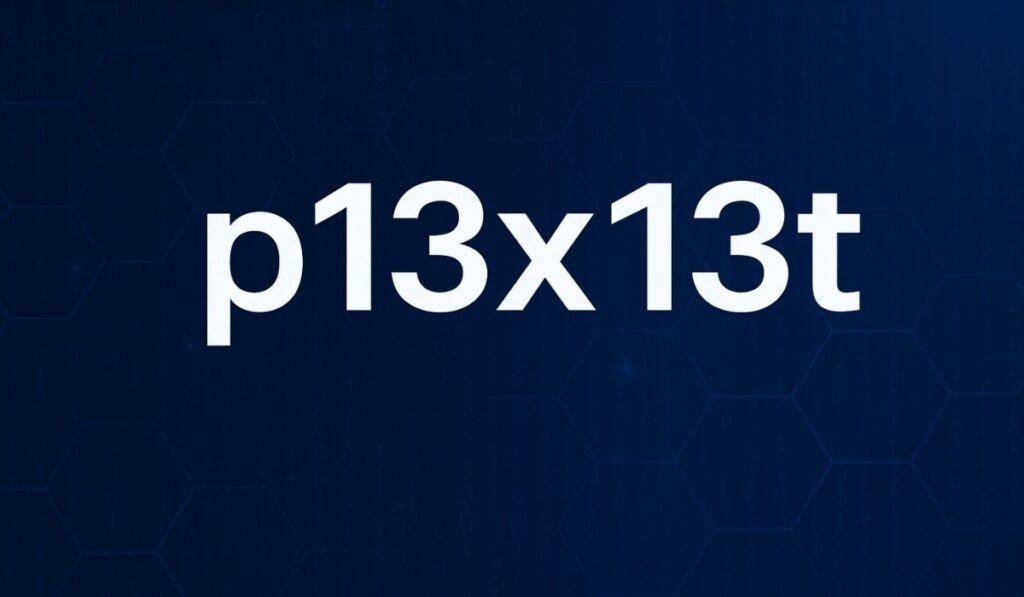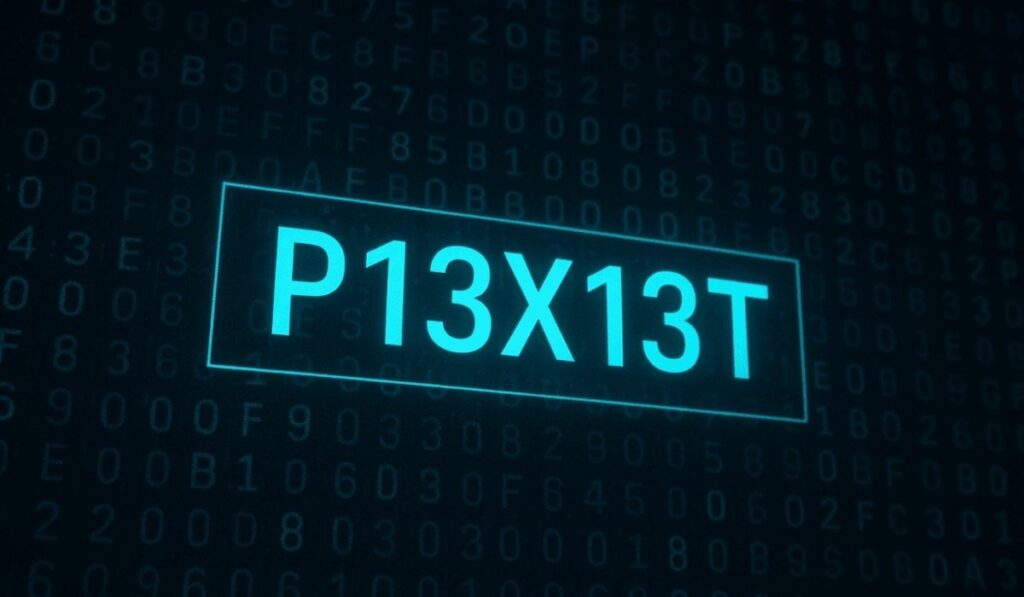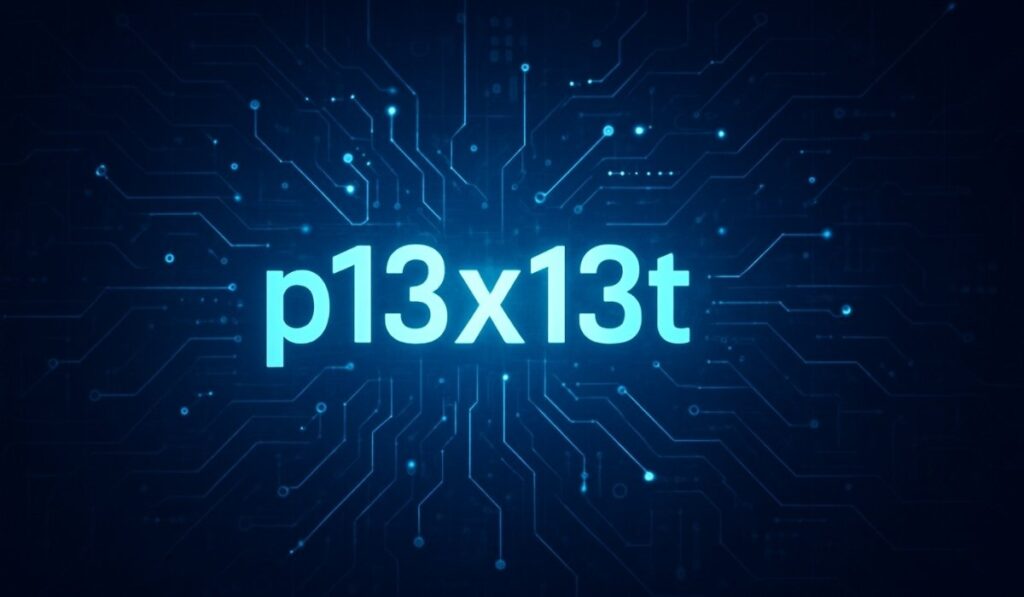Blog
p13x13t: Decoding the Enigmatic Digital Identifier

In the ever-evolving digital landscape, unique identifiers play a pivotal role in how systems, data, and users interact. Among these identifiers, p13x13t has captured the attention of technologists, cybersecurity experts, and digital enthusiasts for its enigmatic nature. At first glance, it appears to be just a random alphanumeric string, but closer inspection reveals layers of complexity, design, and functionality. This blog explores what is, how it works, its significance in modern digital systems, and why it has become a point of fascination across various technology communities. Understanding offers insights into broader digital practices, data security, and the intricate architecture of online systems.
Understanding Digital Identifiers
Digital identifiers are sequences of characters or numbers that are used to uniquely distinguish entities in digital environments. They can represent anything from user accounts to files, transactions, or system processes. The importance of identifiers cannot be overstated; without them, tracking digital activity or maintaining data integrity would be virtually impossible. p13x13t is a prime example of a modern identifier designed for precision and uniqueness. Unlike simple sequential codes or human-readable names, combines a specific mix of letters and numbers that increases its security, minimizes duplication, and supports diverse applications across digital platforms.
The Structure of p13x13t

The construction of p13x13t is both intentional and sophisticated. It typically consists of letters interspersed with numbers in a seemingly random pattern, which makes it difficult for unauthorized users to predict or replicate. Each segment of the code can carry different metadata or system-relevant information, although much of its exact logic is proprietary. Experts often note that identifiers like follow patterns informed by cryptographic principles, timestamps, or algorithmic generation processes. This combination of randomness and design ensures that can function effectively in complex systems where uniqueness, traceability, and security are paramount.
Applications of p13x13t
One of the defining features of p13x13t is its versatility. In some systems, it acts as a session or transaction identifier, allowing software to track specific actions or events without exposing sensitive information. In other contexts, it is used to label files, resources, or encrypted data, ensuring that every element can be uniquely referenced without ambiguity. With the rise of blockchain, cloud computing, and decentralized networks, identifiers like have become increasingly essential. They provide the backbone for secure transactions, accurate record-keeping, and seamless interoperability between systems. Without such identifiers, the digital economy and modern software architecture would struggle to maintain reliability.
Why p13x13t Has Gained Attention

The intrigue surrounding p13x13t is not solely technical. Its cryptic appearance sparks curiosity among developers and casual observers alike. In online communities, it has become a symbol of digital sophistication and complexity. People are drawn to understanding its purpose, origin, and how such codes are generated. Moreover, the growing awareness of cybersecurity threats has elevated the importance of robust identifiers, making a point of reference in discussions about secure system design. Its enigmatic nature embodies the broader challenges of digital management: balancing simplicity for usability with complexity for protection.
Security Implications
Security is a fundamental reason why p13x13t exists in its current form. Unique identifiers prevent data collisions, reduce the risk of duplication, and serve as a defensive layer against unauthorized access. By combining alphanumeric patterns with cryptographic or algorithmic elements, ensures that replicating or guessing the code is practically impossible. Organizations that use such identifiers can audit actions more effectively, trace data flows accurately, and enforce permissions rigorously. In an era where data breaches and cyber threats are increasingly sophisticated, identifiers like are vital for maintaining system integrity and protecting sensitive information.
The Role of p13x13t in Software Development

In modern software engineering, p13x13t plays a critical role in streamlining operations and ensuring consistency. Developers often rely on unique identifiers to manage database entries, control versioning, and authenticate users. By providing a robust mechanism to track individual elements, reduces the likelihood of conflicts and improves system reliability. Its design also supports automation, enabling software to perform tasks such as syncing data, generating reports, or managing sessions without human intervention. As software ecosystems grow increasingly complex, the significance of a well-structured identifier like p13x13t cannot be overstated.
p13x13t in Emerging Technologies
Emerging technologies such as blockchain, decentralized finance, and Internet of Things (IoT) networks demand high levels of precision and traceability. fits seamlessly into these contexts because it ensures that every digital asset, transaction, or device can be uniquely referenced. In blockchain systems, for example, identifiers are critical for validating transactions and preventing duplication or fraud. In IoT ecosystems, unique codes like allow devices to communicate securely and maintain accurate logs. Its adaptability demonstrates that p13x13t is not limited to traditional computing environments but is poised to become integral to the next generation of digital technologies.
Benefits of Using p13x13t

There are multiple benefits to implementing p13x13t in digital systems. Firstly, it ensures uniqueness, which is essential for preventing errors in databases and online platforms. Secondly, it enhances security by making codes difficult to replicate or manipulate. Thirdly, it supports traceability, enabling administrators to track actions, transactions, or data flows efficiently. Finally, facilitates interoperability across different platforms, allowing systems to communicate effectively without confusion or conflict. Collectively, these benefits make a powerful tool for any organization or developer looking to improve digital reliability and security.
Challenges and Considerations
While p13x13t offers numerous advantages, it is not without challenges. Its complex structure can be difficult for humans to interpret, requiring specialized systems to generate, store, and manage it effectively. Additionally, the reliance on unique identifiers requires robust system design to prevent conflicts or accidental duplication. In decentralized or large-scale networks, ensuring the global uniqueness of can be technically demanding. However, these challenges are outweighed by the benefits it provides, particularly in environments where data integrity and security are non-negotiable.
The Future of p13x13t
As digital ecosystems continue to grow, the demand for sophisticated identifiers like p13x13t will only increase. Advancements in cryptography, artificial intelligence, and distributed computing will likely influence how such identifiers are generated and managed. The adaptability of suggests it will remain relevant in both traditional and emerging digital environments, from corporate IT systems to blockchain networks and beyond. Understanding p13x13t today provides valuable insights into the future of digital architecture, highlighting the importance of thoughtful design, security, and reliability in the codes that underpin modern technology.
Conclusion
In conclusion, p13x13t is far more than just a string of letters and numbers. It represents the intersection of technology, security, and system design. Its structure, applications, and versatility demonstrate how critical unique identifiers are in modern digital environments. From supporting secure transactions to enabling robust software development, is a cornerstone of digital innovation. As technology evolves, the principles behind will continue to shape how we design, secure, and interact with digital systems. Understanding it is not only important for technologists but also for anyone interested in the intricate mechanisms that drive our increasingly digital world.
Frequently Asked Questions
1. What is p13x13t?
- p13x13t is a unique alphanumeric identifier used in digital systems to distinguish data, users, transactions, or resources. It combines letters and numbers in a complex structure to ensure uniqueness and security.
2. How is p13x13t used in digital systems?
- It is used for session tracking, file referencing, encrypted data management, software versioning, and secure transaction validation. Its versatility makes it suitable for a wide range of applications.
3. Why is p13x13t considered secure?
- The combination of randomness, cryptographic principles, and proprietary generation methods makes it difficult for unauthorized users to replicate or predict, enhancing overall system security.
4. Can p13x13t be used in blockchain or IoT systems?
- Yes, its unique structure makes it ideal for emerging technologies such as blockchain and IoT, where traceability, security, and global uniqueness are critical.
5. What are the main benefits of using p13x13t?
- It ensures uniqueness, improves data security, enhances traceability, supports interoperability, and reduces the risk of system conflicts or errors.

-

 Life Style10 months ago
Life Style10 months agoWho is Amra Nor Jenkins? The Untold Story About Jeezy’s Daughter
-

 Celebrity6 months ago
Celebrity6 months agoThe Private World of Marina Pearl LeBlanc, Matt LeBlanc’s Only Child
-

 Entertainment10 months ago
Entertainment10 months agoWhat is Shoujo Ramune? The Comprehensive Guide
-

 Celebrity11 months ago
Celebrity11 months agoThe Untold Truth of William Mapel: A Deep Dive into His Personal Life
-

 News11 months ago
News11 months agoRanch World Ads Review: Everything You Need to Know
-

 Celebrity11 months ago
Celebrity11 months agoThe Untold Story of Denika Kisty: Her Family, Net Worth, and More
-

 Celebrity11 months ago
Celebrity11 months agoWho Is Stephanie Sarkisian? All You Need To Know AboutSteve Sarkisian’s Ex-Wife
-

 Life Style10 months ago
Life Style10 months agoJill Wagner Accident: Life and Health After Accident











